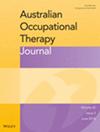Becoming through simulation-based learning: Lived experiences of occupational therapy students from culturally and linguistically diverse backgrounds
Abstract
Introduction
With increasing diversity in health professionals education and ongoing workforce shortages, students from culturally and linguistically diverse (CALD) backgrounds form a growing proportion of occupational therapy cohorts in Australia. Simulation-based learning (SBL) has been widely integrated as a pedagogical strategy to support students' preparation for clinical practice. However, few studies have explored the lived experiences of Australian occupational therapy students from CALD backgrounds participating in high-fidelity SBL. This study aimed to address this gap.
Methods
A qualitative descriptive study was conducted using semi-structured interviews with 15 occupational therapy students from CALD backgrounds enrolled across Australian universities who had participated in high-fidelity SBL. Reflexive thematic analysis was employed to identify key patterns within the data.
Results
Four themes were generated: (1) between fear and growth – the emotional and psychological responses to SBL; (2) challenges in speaking up and being heard – facing language barriers in SBL; (3) balancing cultural identity – managing cultural differences in SBL; and (4) wanting to belong – navigating relationships with peers and educators in SBL.
Consumer and Community Involvement
No consumers or community members were involved as research team members or in an advisory capacity in this study.
Conclusion
High-fidelity SBL provides valuable learning opportunities and also presents challenges for occupational therapy students from CALD backgrounds. Acknowledging both their struggles and strengths in SBL can help develop more tailored educational strategies. Supporting their success in SBL is crucial for creating more inclusive learning environments and advancing a more culturally competent occupational therapy workforce.

 求助内容:
求助内容: 应助结果提醒方式:
应助结果提醒方式:


